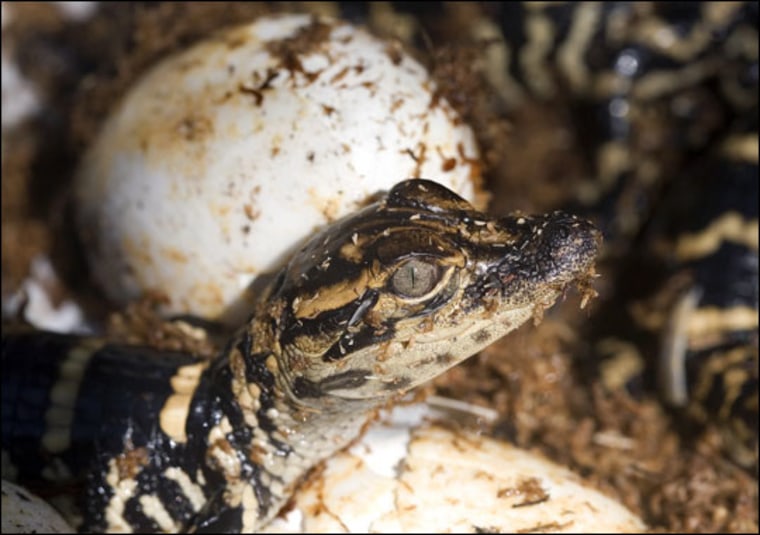New experiments on one of the planet's most adaptable reptiles, alligators, are lending clues to how dinosaurs took over the world.
The first dinosaurs appeared along with the ancestors of alligators around 230 million years ago, in a tough environment for air breathers. Oxygen in Earth's atmosphere had bottomed out at 12 percent, only about half of today's 21 percent concentration.
Dinosaurs evolved into huge multi-ton lizards and then died out. But alligators survived almost unchanged from their ancient form, despite fluctuations in oxygen — with concentrations as high as 23 percent — while the dinosaurs were still alive.
"We know alligators are doing something right," Tomasz Owerkowicz of the university of California-Irvine said. "They survived hypoxia and hyperoxia (low and high oxygen), they have been around a very long time, and they are all over the world. A lot of other vertebrates wouldn't have made it."
To figure out how they do it — and how dinosaurs' bodies may have adapted to initially low, then increasing oxygen levels — Owerkowicz and group of researchers incubated three separate groups of alligator eggs, exposing them to environments containing 12 percent, 21 percent, and 30 percent oxygen.
When the eggs hatched, baby alligators in the low-oxygen environments were born with bellies distended by an excess of egg yolk. Normal and high-oxygen hatchlings had normal bellies.
The differences were even more pronounced after three months of growth. Oxygen-starved alligators had enlarged lungs and hearts, but overall they didn't grow as long or as heavy as the other two groups. Owerkowicz believes this is because animals in the low-oxygen environment have to dedicate larger amounts of their metabolic energy to breathing enough oxygen to function.
The finding points to a long-held suspicion about dinosaurs: they got bigger as oxygen in the atmosphere slowly crept up over millions of years. By the time it peaked at 23 percent in the Cretaceous period, huge sauropods and giant predators like Tyrannosaurus Rex ruled the planet.
Owerkowicz stressed that his experiments "just scratch the surface" of understanding the connection between reptilian physiology and oxygen levels, and that the size-oxygen relationship is not at all clear.
And as John VandenBrooks of Arizona State University pointed out, more isn't always better. In separate experiments, VandenBrooks found that alligator embryos started to show signs of damage when incubated in environments above 27 percent oxygen.
"About 27 percent you start to see increased free radical production and ozone production, which increases damage to cells and tissue," he said. "You lose the positive effects."
Either way, Owerkowicz said understanding how dinosaurs lived in the ancient world will mean considering the strange and varying atmosphere they breathed.
"You cannot assume the metabolic rates of animals living under hypoxia were similar to today's," he said. "Metabolic rate affects everything an animal does. What speeds could the animals run at? How much food could they digest? Oxygen would have a huge impact on all of that."
